ELA-01.R 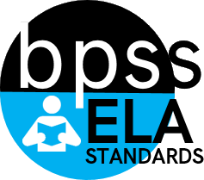 ELA-01.R ELA-01.R Strand 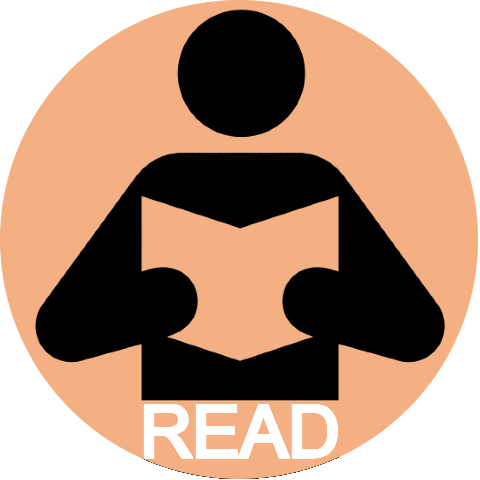 | (R) Reading
Learners will comprehend, analyze, and evaluate literary and informational texts in various formats, genres, and levels of complexity.
|
Clusters- (C) Comprehension
Learners will read to understand various complex literary and informational texts.
- (TA) Text Analysis
Learners will analyze, interpret, and evaluate complex literary and informational texts that include a wide variety of genres and formats.
Calculation Method for StrandsStrands are larger groups of related standards. The Strand Grade is a calculation of all the related standards. Click on the standard name below each Strands to access the learning targets and rubrics/ proficiency scales
for individual standards within the domain. |
|
ELA-01.R.02

|
1st Grade (ELA) Targeted Standard
(R) Reading
(C) Comprehension
Learners will read to understand a variety of complex literary and informational texts.
|
ELA-01.R.02 Ask and answer questions about a variety of texts, genres, photographs, or illustrations before, during, and after shared reading or other text-listening experiences to compare, contrast, predict, or infer.
 Proficiency Scale Proficiency Scale
Progressions
Standard R.02: Text Comprehension/Inferences
- ELA-00.R.02 Respond to a variety of texts, photographs, or illustrations before, during, and after shared reading or other text-listening experiences to compare, contrast, predict, or infer.
- ELA-01.R.02 Ask and answer questions about a variety of texts, genres, photographs, or illustrations before, during, and after shared reading or other text-listening experiences to compare, contrast, predict, or infer.
- ELA-02.R.02 Ask and answer questions about key details before, during, and after reading a variety of literary and informational texts to compare, contrast, predict, or
infer.*
- ELA-03.R.02 Ask and answer questions about key details before, during, and after reading a variety of genres, literary, and informational texts using text evidence to
compare, contrast, predict, and infer.*
- ELA-04.R.02 Make inferences while reading a variety of genres, literary, and informational texts; providing text evidence.*
- ELA-05.R.02 Make inferences drawn from the text during and after reading a variety of genres, literary, and informational texts.*
- ELA-06.R.02 Comprehend a variety of texts while developing inferences and providing supportive textual evidence.
- ELA-07.R.02 Comprehend a variety of texts while developing inferences and providing supportive textual evidence and reasoning.
- ELA-08.R.02 Comprehend a variety of texts while developing inferences and providing relevant textual evidence and reasoning.
- ELA-09.R.02 Comprehend a variety of texts with multiple levels of complexity while developing inferences and providing relevant textual evidence and reasoning.
- ELA-10.R.02 Comprehend a variety of texts with multiple levels of complexity while developing inferences and providing relevant textual evidence and reasoning.
- ELA-11.R.02 Comprehend a variety of texts with multiple levels of complexity while developing inferences and providing relevant textual evidence and reasoning.
- ELA-12.R.02 Comprehend a variety of texts with multiple levels of complexity while developing inferences and providing relevant textual evidence and reasoning.
|
|
ELA-01.R.03a

|
1st Grade (ELA) Targeted Standard
(R) Reading
(C) Comprehension
Learners will read to understand a variety of complex literary and informational texts.
|
ELA-01.R.03a Identify the topic of an informational text, photograph, or illustration during or after a shared reading or other text-listening experiences.*
 Proficiency Scale Proficiency Scale
Progressions
Standard R.03a: Summarizing Nonfiction Text
- ELA-00.R.03a Tell about the informational text, photographs, or illustrations before, during, or after a shared reading or other text-listening experience.*
- ELA-01.R.03a Identify the topic of an informational text, photograph, or illustration during or after a shared reading or other text-listening experiences.*
- ELA-02.R.03a Identify the main idea with supporting details during or after reading an informational text or passage.*
- ELA-03.R.03a Summarize the main idea(s) with supporting details during or after reading an informational text or passage.*
- ELA-04.R.03a Summarize an informational text or passage, stating the main idea(s) and providing supporting details.*
- ELA-05.R.03a Summarize an informational text or passage, stating the main idea(s) and providing supporting details.*
- ELA-06.R.03a Summarize nonfiction texts objectively, including relevant details.
- ELA-07.R.03a Summarize and/or paraphrase nonfiction texts objectively, including relevant details and avoiding unnecessary information.
- ELA-08.R.03a Summarize and/or paraphrase nonfiction texts objectively, including relevant details and avoiding unnecessary information.
- ELA-09.R.03a Summarize and/or paraphrase nonfiction texts objectively, including relevant information.
- ELA-10.R.03a Summarize and/or paraphrase nonfiction texts objectively, including relevant information.
- ELA-11.R.03a Summarize and/or paraphrase nonfiction texts objectively, including relevant information.
- ELA-12.R.03a Summarize and/or paraphrase nonfiction texts objectively, including relevant information.
|
|
ELA-01.R.03b

|
1st Grade (ELA) Targeted Standard
(R) Reading
(C) Comprehension
Learners will read to understand a variety of complex literary and informational texts.
|
ELA-01.R.03b Identify characters, setting, and plot in a literary text during or after a shared reading or other text-listening experience.*
 Proficiency Scale Proficiency Scale
Progressions
Standard R.03b: Summarize Literary Text
- ELA-00.R.03b Tell about characters and setting in a literary text during or after a shared reading or other text-listening experience.*
- ELA-01.R.03b Identify characters, setting, and plot in a literary text during or after a shared reading or other text-listening experience.*
- ELA-02.R.03b Retell the plot to include the beginning, middle, and end of a literary text after reading.*
- ELA-03.R.03b Summarize the story by including major story elements after reading a literary text or passage.*
- ELA-04.R.03b Summarize the story by including major story elements after reading a literary text or passage.*
- ELA-05.R.03b Summarize a story by including major story elements after reading a literary text.*
- ELA-06.R.03b Summarize literary texts objectively, including relevant details.
- ELA-07.R.03b Summarize and/or paraphrase literary texts objectively, including relevant details and avoiding unnecessary information.
- ELA-08.R.03b Summarize and/or paraphrase literary texts objectively, including relevant details and avoiding unnecessary information.
- ELA-09.R.03b Summarize and/or paraphrase literary texts objectively, including relevant information.
- ELA-10.R.03b Summarize and/or paraphrase literary texts objectively, including relevant information.
- ELA-11.R.03b Summarize and paraphrase literary texts objectively, including relevant information.
- ELA-12.R.03b Summarize and paraphrase literary texts objectively, including relevant information.
|
|
ELA-01.R.05

|
1st Grade (ELA) Targeted Standard
(R) Reading
(C) Comprehension
Learners will read to understand a variety of complex literary and informational texts.
|
ELA-01.R.05 Determine the meaning of unknown and multiple-meaning words and phrases through read-alouds or other text-listening experiences.*
 Proficiency Scale Proficiency Scale
Progressions
Standard R.05: Use Text to Determine Word Meaning
- ELA-00.R.05 Determine the meaning of unknown and multiple-meaning words and phrases through read-alouds or other text-listening experiences.*
- ELA-01.R.05 Determine the meaning of unknown and multiple-meaning words and phrases through read-alouds or other text-listening experiences.*
- ELA-02.R.05 Determine the meaning of unknown words and phrases through a variety of text experiences.*
- ELA-03.R.05 Determine the meaning of unknown and multi-meaning words within a text.*
- ELA-04.R.05 Determine the meaning of unknown and multiple-meaning words and phrases within a text.*
- ELA-05.R.05 Determine the meaning of unknown and multiple-meaning words and phrases within a text.*
- ELA-06.R.05 Determine the meaning of words and phrases as they are used in the text, including figurative, denotative, and connotative meanings.
- ELA-07.R.05 Determine the meaning and purpose of words and phrases as they contribute to the text, including figurative, denotative, and connotative meanings.
- ELA-08.R.05 Determine the meaning and purpose of words and phrases as they contribute to the text, including figurative, denotative, and connotative meanings.
- ELA-09.R.05 Determine the meaning and purpose of words and phrases as they are used in the text, including academic vocabulary, figurative, ambiguous, and connotative meanings.
- ELA-10.R.05 Determine the meaning and purpose of words and phrases as they are used in the text, including academic vocabulary, figurative, ambiguous, and connotative meanings.
- ELA-11.R.05 Determine the meaning, purpose, and impact of words and phrases as they are used in the text, including academic vocabulary, figurative, ambiguous, and connotative meanings.
- ELA-12.R.05 Determine the meaning, purpose, and impact of words and phrases as they are used in the text, including academic vocabulary, figurative, ambiguous, and connotative meanings.
|
|
ELA-01.R.06

|
1st Grade (ELA) Targeted Standard
(R) Reading
(TA) Text Analysis
Learners will analyze, interpret, and evaluate complex literary and informational texts that include a wide variety of genres and formats.
|
ELA-01.R.06 Recognize basic text features during or after a shared reading or other text-listening experience.
 Proficiency Scale Proficiency Scale
Progressions
Standard R.06: Text Features and Structure
- ELA-00.R.06 Identify photographs, illustrations, and labels during or after a shared reading or other text-listening experience.
- ELA-01.R.06 Recognize basic text features during or after a shared reading or other text-listening experience.
- ELA-02.R.06 Identify text features and use previously learned text features to read and understand a text or passage.*
- ELA-03.R.06 Use text features and previously learned text features to read and understand a text or passage.*
- ELA-04.R.06 Determine the structure of an informational text: ELA-05.R.06 Describe the structure of informational texts:
- ELA-06.R.06 Describe how a paragraph, chapter, stanza, or section fits into the overall structure of a text and contributes to the development of ideas.
- ELA-07.R.06 Analyze the structure an author uses to organize a text, including how the major sections or stanzas contribute to the whole and the development of ideas, and the overall purpose of the text.
- ELA-08.R.06 Analyze the structure an author uses to organize a text, including how sections, paragraphs, stanzas, and/or particular sentences contribute to the development of ideas and the overall purpose of the text.
- ELA-09.R.06 Analyze how the author's choice in structure, form, and format supports the purpose, contributes to the meaning, or impacts the audience.
- ELA-10.R.06 Analyze how the author's choice in structure, form, and format supports the purpose, contributes to the meaning, or impacts the audience.
- ELA-11.R.06 Analyze and evaluate how the author's choice in structure, form, and format supports the purpose, contributes to the meaning, or impacts the audience.
- ELA-12.R.06 Analyze and evaluate how the author's choice in structure, form, and format supports the purpose, contributes to the meaning, or impacts the audience.
|
|
ELA-01.R.08

|
1st Grade (ELA) Targeted Standard
(R) Reading
(TA) Text Analysis
Learners will analyze, interpret, and evaluate complex literary and informational texts that include a wide variety of genres and formats.
|
ELA-01.R.08 Use a variety of fiction texts.
 Proficiency Scale Proficiency Scale
Sub-Standards
- (a.) Identify characters’ feelings or traits in a story, poem, or nursery rhyme during or after a shared reading or other text-listening experience.
- (b.) Compare and contrast the adventures and experiences of characters in stories during or after a
shared reading or other text-listening experience.
Progressions
Standard R.08: Analysis and Comparison of Literary Texts
- ELA-00.R.08 Use a variety of fiction texts.
- ELA-01.R.08 Use a variety of fiction texts.
- ELA-02.R.08 Use a variety of fiction and poetry texts.
- ELA-03.R.08 Analyze a variety of fiction and poetry texts.
- ELA-04.R.08 Analyze a variety of fiction and poetry texts.
- ELA-05.R.08 Analyze a variety of fiction and poetry texts.
- ELA-06.R.08 Analyze a variety of fiction texts using textual evidence for support.
- ELA-07.R.08 Analyze a variety of fiction texts using textual evidence for support.
- ELA-08.R.08 Analyze a variety of fiction texts using textual evidence for support.
- ELA-09.R.08 Analyze the development and interaction of literary elements and determine how they impact meaning, using strong textual evidence to support the analysis.
- ELA-10.R.08 Analyze the development and interaction of literary elements and determine how they impact meaning, using strong textual evidence to support the analysis.
- ELA-11.R.08 Analyze the development and interaction of literary elements and determine how they impact meaning, using strong and thorough textual evidence to support the analysis.
- ELA-12.R.08 Analyze the development and interaction of literary elements and determine how they impact meaning, using strong and thorough textual evidence to support the analysis.
|
|

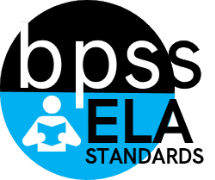
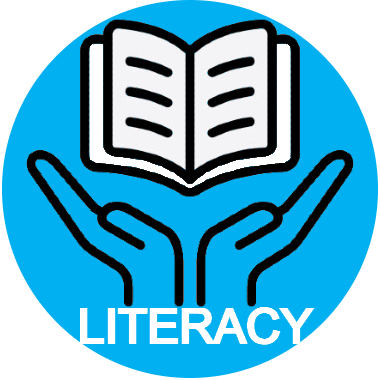 (F)
(F)
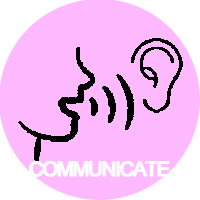 (C)
(C)
 (R)
(R)
 (Wr)
(Wr)
 (IR)
(IR)

